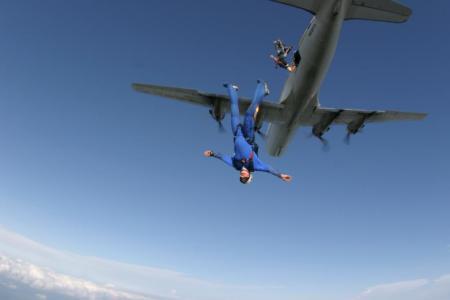Recommended Posts
Quote
I believe Van Prey Jr. and his wife, Emiko, are operating a diesel 206 on an east coast DZ somewhere.
We are not running a Diesel on our planes yet but I keep talking about it to everyone that will listen. I want to shorten the climb times for me and the up jumpers, reduce the fuel burn, and make the 206 an airplane that you can give to a low time pilot with out him screwing up the engine. Changing tires is easier than cylinders.
Hey Jr.
My bad, I thought I had heard that y'all had done did that, but I guess its just still "in work."
377 22
feuergnom 29
slightly off-topic:
automobile is in fact an odd mixture off greek and latin. for the lingofreaks it should be either ipsomobil (latin) or autokineton (greek) ![]()
dudeist skydiver # 666
mr2mk1g 10
QuoteThe Germans had Jumo Diesel engines on certain models of their WW 2 JU 88 twin engine bomber. Hard to get comparable HP to weight ratios between avgas spark ignited engines and compression ignited diesels. I have trusted my life to diesels during years as a commercial tuna fisherman, often thousands of miles from shore. In my experience if you push too hard in making a diesel lightweight, reliability always suffers. The ones that go 30,000 hours without an overhaul are usually the big heavy ones, like old school CATs, Cummins and Jimmys. All steel and cast iron, no aluminum. Although electronic controls (FADEC) are making diesels more efficient, I loved the old ones which would not miss a beat during a total electrical failure.
Sure, but if the lightweight one goes 3000 hrs between overhauls you are doing better than an IO550.





But with diesel, you also get a pilot with a ten-gallon hat, 6x9 inch belt-buckle, cowboy boots, and the plane comes equipped with a CB-radio in place of the NavCom.
Share this post
Link to post
Share on other sites